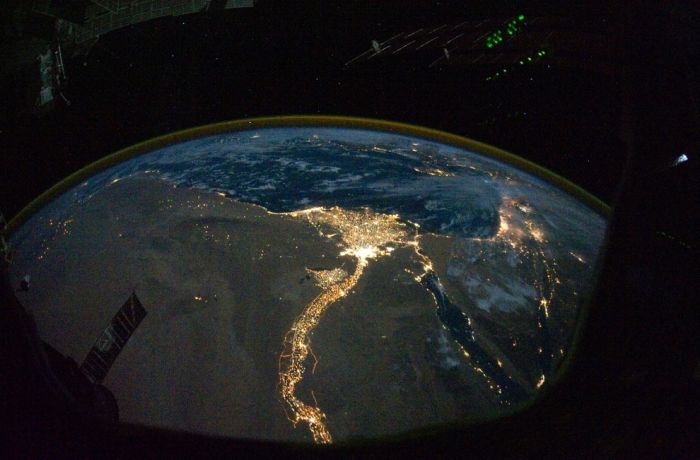|
|
Exploring Astronomy Photography Of Outer Space Universe
|
Other experimental observations can be explained by combining the overall expansion of space with nuclear and atomic physics. As the universe expands, the energy density of the electromagnetic radiation decreases more quickly than does that of matter, since the energy of a photon decreases with its wavelength. Thus, although the energy density of the universe is now dominated by matter, it was once dominated by radiation; poetically speaking, all was light. As the universe expanded, its energy density decreased and it became cooler; as it did so, the elementary particles of matter could associate stably into ever larger combinations. Thus, in the early part of the matter-dominated era, stable protons and neutrons formed, which then associated into atomic nuclei. At this stage, the matter in the universe was mainly a hot, dense plasma of negative electrons, neutral neutrinos and positive nuclei. Nuclear reactions among the nuclei led to the present abundances of the lighter nuclei, particularly hydrogen, deuterium, and helium. Eventually, the electrons and nuclei combined to form stable atoms, which are transparent to most wavelengths of radiation; at this point, the radiation decoupled from the matter, forming the ubiquitous, isotropic background of microwave radiation observed today.
Other observations are not answered definitively by known physics. According to the prevailing theory, a slight imbalance of matter over antimatter was present in the universe's creation, or developed very shortly thereafter, possibly due to the CP violation that has been observed by particle physicists. Although the matter and antimatter mostly annihilated one another, producing photons, a small residue of matter survived, giving the present matter-dominated universe. Several lines of evidence also suggest that a rapid cosmic inflation of the universe occurred very early in its history (roughly 10−35 seconds after its creation). Recent observations also suggest that the cosmological constant (Λ) is not zero and that the net mass-energy content of the universe is dominated by a dark energy and dark matter that have not been characterized scientifically. They differ in their gravitational effects. Dark matter gravitates as ordinary matter does, and thus slows the expansion of the universe; by contrast, dark energy serves to accelerate the universe's expansion.
• Multiverse theory
Some speculative theories have proposed that this universe is but one of a set of disconnected universes, collectively denoted as the multiverse, challenging or enhancing more limited definitions of the universe. Scientific multiverse theories are distinct from concepts such as alternate planes of consciousness and simulated reality, although the idea of a larger universe is not new; for example, Bishop Étienne Tempier of Paris ruled in 1277 that God could create as many universes as he saw fit, a question that was being hotly debated by the French theologians.
|
|









